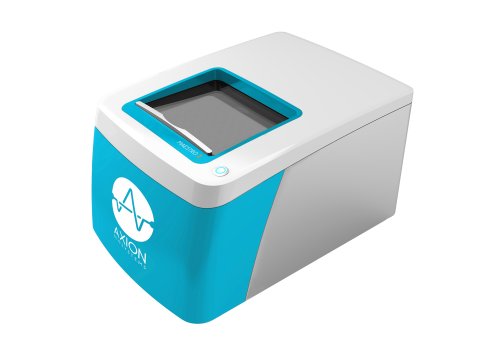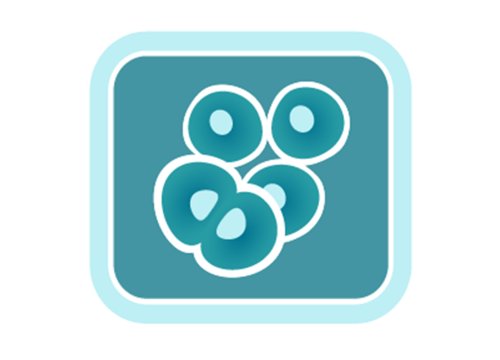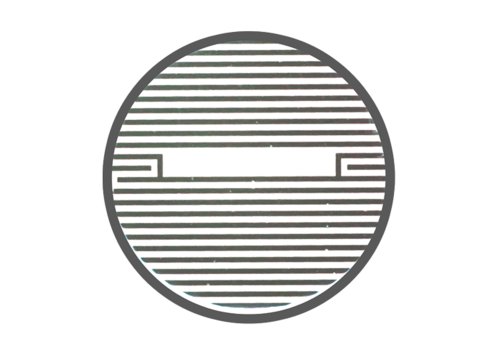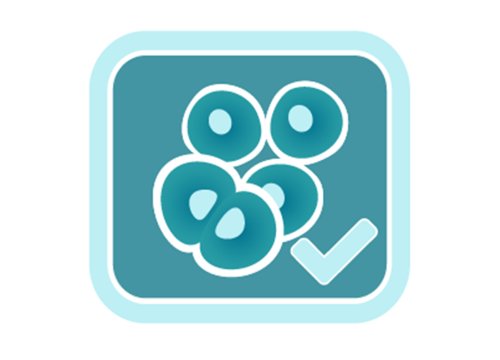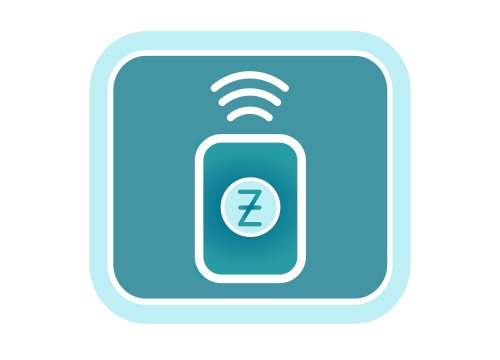Presentation from the Festival of Biologics 2020 by Stacie Chvatal, PhD.
Evaluate the killing kinetics of immune cells (e.g. CAR T or NK) at physiologically relevant effector cell to target cell ratios with Axion's Maestro Z live cell analysis system.
Summary:
Axion BioSystems' Maestro Z system offers impedance-based cell analysis for real-time, continuous, label-free monitoring of your cells. Continuous data reveals the kinetics of immune interactions with cancer cells for better mechanistic understanding without the time- and cost-intensive process of repeating multiple endpoint assays. In this presentation, learn how the Maestro Z next generation cell analysis platform can be used for developing immunotherapies. The advantages of Axion’s Maestro Z are discussed and example data from selected applications, including cell proliferation, cytotoxicity, and immuno-oncology, are presented.
Transcript of webinar on Developing Immunotherapies with Maestro Z
Hello everyone and thank you for joining our presentation today. My name is Stacie Chvatal, and I'm the Product Manager at Axion Biosystems. I will be with my colleagues at the Axion booth during this event. We look forward to meeting you there and answering any questions you may have. Axion BioSystems is a global leading manufacturer and provider of electrode-based technologies for life sciences. Our solutions for cell analysis allow label-free non-invasive recording for continuous long-term monitoring of cell behavior in a multi-well plate format. In today's presentation, I'll discuss how our next generation cell analysis platform, the Maestro Z, can be used for developing immunotherapies.
Building on over 10 years experience in the field we have expanded the capabilities of our core technology to measure cellular impedance. Our latest product, the Maestro Z, has been designed to be versatile to scientists needs in both research and manufacturing environments. Here I will discuss the advantages of Axion's Maestro Z, and show examples of selected applications including, cell proliferation, cytotoxicity, and immuno-oncology.
Impedance-based cell analysis is a well-established technique for monitoring the presence and changes in morphology and behavior of cells in culture. First I'll describe how the assay works. The 96-well CytoView-Z plate has a recording electrode embedded in the culture surface of each well. You can culture cells in the plate just as you would normally in a typical assay plate. Each well has a viewing window in the center for easy cell visualization and assay multiplexing.
To measure impedance, small electrical currents are delivered to electrodes embedded in the cell culture substrate. Before cells are added, the electrical current easily passes and the impedance is low. When cells are present and attached to the substrate they block these electrical currents and are detected as an increase in impedance.
Impedance is also sensitive to subtle changes in cell conformation, such as those caused by receptor-mediated signaling, or cell morphology. If a perturbation causes cells to die or detach the impedance decreases. The impedance assay has proven to be a suitable assay to study for example cell proliferation and differentiation, strength of cell-to-cell coupling, cell migration, cell signaling, cytotoxicity of chemotherapy agents, and efficacy of cell therapies. Because the impedance measurement is non-invasive and label-free, the dynamics of the changes can be continuously monitored in real time and over minutes, hours, or days without disturbing the underlying biology.
Axion's Maestro Z is a bench top size instrument with a built-in incubator for fine control and tracking of temperature and CO2. The viewing window in the plate allows for multiplexing with other assays. The small footprint means it doesn't take up much space in the lab. The software is intuitive with automatic data acquisition, interactive reports, and you can even use a mobile app to monitor your experiments remotely.
You start the assay with the push of a button to dock the plate into the Maestro Z. This automatically triggers the regulation of the temperature and CO2 levels in the chamber around the plate. The plate usage is logged via an integrated barcode scanner for convenient experiment tracking. Data acquisition starts automatically as soon as the plate is docked and all 96 wells are simultaneously recorded in real time until the plate is removed. You can also input a custom gas mix into the chamber in the Maestro Z in order to reproduce the oxygen levels observed in in vivo inflammatory or cancerous conditions.
The AxIS Z software provides a straightforward approach to the setup, execution, and analysis of impedance experiments. Easily referenced color-coded plate maps provide all the information about the experiment, and track control types for automation of the analysis. Setup is made easy with automatic acquisition and pre-configured settings for analysis. Impedance data are continuously displayed for each treatment group across the plate in real time. To compare treatment groups at any time simply drag the cursor over the plot. With just a click you can plot percent cytosis curves and compute kill time 50 values. Axis Z's interactive report, called the Lab Notebook, allows you to export figures and data tables directly to Excel. Simply right click on a plot in the AxIS Z software to send that plot and its underlying data to the Lab Notebook. The Lab Notebook contains fully customizable figures with live data references and error bars. The plate map and analysis settings are exported as well for traceability.
With the Maestro Z Smartphone Application you can monitor your ongoing experiment from outside the lab. Use the App to check in on your cells and experiment to ensure everything is running smoothly while you're away. The Maestro Z App lets you check on the temperature and CO2 status, and view live interactive data plots and tables when you can't be in the lab.
The new GxP impedance module has compliance features enabled so that you can achieve FDA 21CFR Part 11 compliance in GMP and GLP labs. User permissions ensure access to experiments and settings is controlled according to your lab's preferences. A built-in Maestro hardware test ensures impedance measurements are accurate in every experiment. Experiment and system-wide audit trails track who ran each experiment, the changes that were made, and preserve all original data. The integrated barcode scanner ensures that all recorded data is associated with the correct plate. Experiments are automatically sorted and logged, and events such as plate docking are auto-tracked. Data and reports are exported with checksums and digital signatures to ensure data integrity. And it's easy to verify that experiment data has not been changed with a single click .CSV files can be exported for easy import into LIMS systems.
Impedance-based cellular assays support a wide range of applications including cell proliferation, cytotoxicity, immuno-oncology, scratch assays for cell migration, cell signaling, TEER assays to investigate barrier function, and virology assays such as antiviral drug studies. Here we will focus on examples of Maestro Z data for cell proliferation, drug-induced toxicity, and an immune cell kill assay.
Different cell lines exhibit different patterns of attachment, growth, and interaction behavior that form their unique cellular profile. The Maestro Z impedance assay allows you to track this cellular profile, and distinguish cells based on type, density, morphology, and attachment. The cellular profile can also be used to ensure cell quality and purity, quantify growth rates, and optimize assay timing.
It also allows you to rapidly optimize cell density and extracellular matrix coating conditions. In this example, HeLa cells were plated at five different densities and the impedance was continuously monitored using the Maestro Z. The highest density of HeLa cells showed the fastest growth rate during adhesion and growth, reaching confluence near 12 hours. By 16 hours, both the two highest densities had reached 100 percent confluency, as exhibited by the plateau in impedance, while the lower cell densities continued to grow and spread.
This middle figure shows the differences between cell densities with a significantly higher impedance at 16 hours for 25,000 and 50,000 cells per well compared to the lower densities. Finally, growth curves for HeLa, A549, and Calu-3 cells illustrate distinct cellular profiles. HeLa cells attached and divided rapidly reaching confluency in less than 10 hours. However they exhibited the lowest maximum impedance value of these three cell lines, reflecting a less tightly packed sheet of elongated cells. In contrast, Calu-3 cells attach and spread quickly, but divide more slowly.
Following attachment, their impedance continues to increase as they form tight junctions and continue to divide to fill in a very tightly packed sheet of flattened cells. A549 cells are another lung epithelial cell line, yet they exhibit a distinct impedance profile reflecting a more loosely packed sheet that lacks tight junctions. A549 cells show an intermediate rise to confluency with final impedance between that of Calu-3 and HeLa cells.
When testing a new drug or cell therapy, endpoint assays only tell whether the cells are dead or alive, but they cannot reveal the dynamics or mechanisms behind the cellular response. Also they provide only a snapshot in time and can miss key time points or features of the cellular response. The Maestro impedance assay allows you to capture the entire time course of cytotoxicity revealing not only the degree but also the dynamics and rate of cell death. Often the kinetics of the cell response give the most insight into the efficacy and mechanism of a compound. In this example, A549 cells were plated and their impedance was tracked continuously with the Maestro Z. The cells adhered and proliferated to cover the bottom of the well resulting in a steady increase in impedance at 24 hours.
Chemotherapy compounds were added to the plate and the real-time impedance curves were used to compare the dynamics of cell killing across the test compounds. In the software it's easy to switch to a cytosis plot like this to see the amount of cell death. Percent cytosis was tracked in real time after dosing, and we can see that Mitoxantrone killed the cells quickly, while Brefeldrin A and Doxorubicin showed progressively slower killing. Cells dosed with Brefeldin A reached 50 percent cytosis at 10 hours, while cells dosed with Doxorubicin reached 50 percent cytosis around 50 hours after dosing, as indicated by the kill time 50. Percent cytolysis and endpoints such as kill time 50, provide insight into the kinetics and efficacy of chemotherapy compounds.
Here we show an example of T cell mediated cytolysis. Immune system effector T cells hold promise for cancer therapy due to their high specificity and innate cytotoxicity. Assessing the functional toxicity of these cells is critical and is often done via endpoint assays. The Maestro Z impedance assay offers a sensitive label-free and non-destructive method to continuously monitor cancer cell proliferation and immune cell-mediated cytotoxicity in real time, revealing not only the potency, but also the kinetics of T cell therapies. In this example, U87 glioblastoma cells were plated at three different densities and their impedance was continuously monitored on the Maestro Z platform. After 24 hours, activated patient-derived T cells were added in a 10:1 effector to target ratio. The addition of activated human T cells resulted in a decrease of the impedance signal consistent with T cell-mediated lysis of the glioma cells. Untreated cells continued to increase in impedance consistent with continued cell proliferation. Percent cytosis was tracked in real time enabling computation of kill time 50. Higher T cell densities led to a faster killing of U87 cells. Percent cytosis and endpoints such as kill time 50, provide insight into the kinetics and efficacy of T cell killing.
Several target cancers for immunotherapy are non-adherent posing a challenge for traditional assays that require cells to be adhered to the surface of the plate. By using cell type specific antibodies, non-adherent cells can be tethered to the surface of the CytoView-Z plate to track cell proliferation. In this example, Daudi cells were plated on a CytoView-Z plate at different densities and their impedance was monitored by the Maestro Z for over 48 hours. Daudi cells tethered by an anti-CD40 antibody showed significant increases in impedance within 2 to 10 hours after cell addition and continued to show increasing impedance values as the cells proliferated over the time course. The impedance increase was correlated with the tethered cell density. Higher densities showed larger changes in impedance in contrast to untethered Daudi cells which showed no change in impedance for any of the cell densities. Thus the Maestro Z can also be used to monitor the potency and kinetics of immune cell-mediated killing of non-adherent cancer cells.
In summary, the Maestro Z is the first self-contained instrument for impedance-based cell assays that does not require an external incubator. It also supports the varying of oxygen levels to those indicative of inflammatory or cancerous environments in vivo. The kinetics of cell growth or killing are tracked directly, sensitively, and quantitatively over hours, days, and even weeks label free and in real time.
The AxIS Z software is powerful and intuitive providing a straightforward approach to the setup, execution, and analysis of impedance experiments. The software is also available with compliance features that provide full data traceability for GxP environments, and the Maestro Z Smartphone Application allows you to monitor your experiment from outside the lab or after hours.
With that I'd like to thank you for listening to this short presentation and invite you to visit us at the booth or contact us directly via our website or email. We are eager to hear your thoughts and look forward to speaking with you soon. Thank you.
